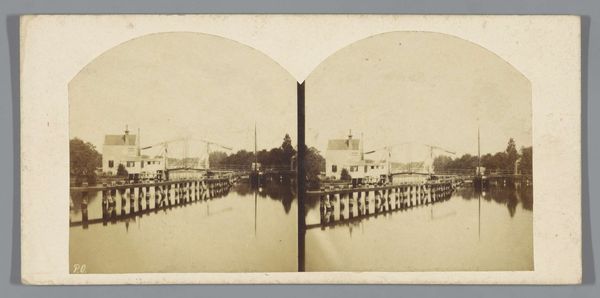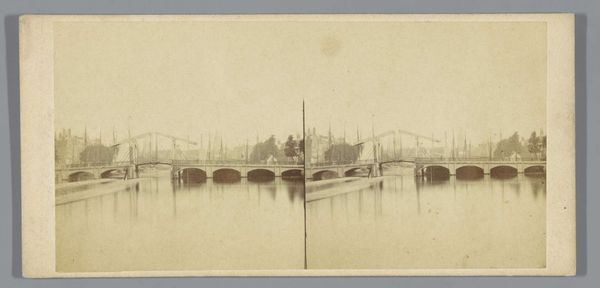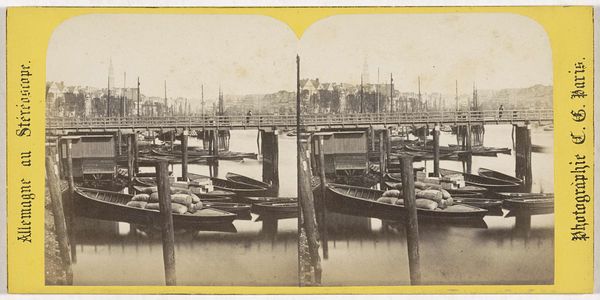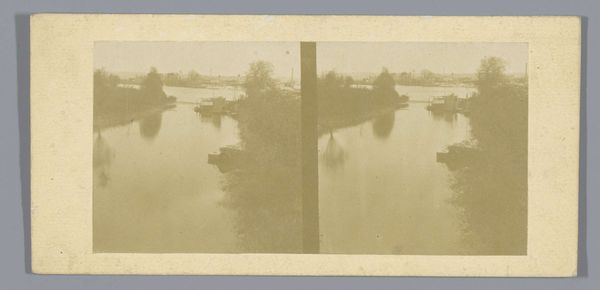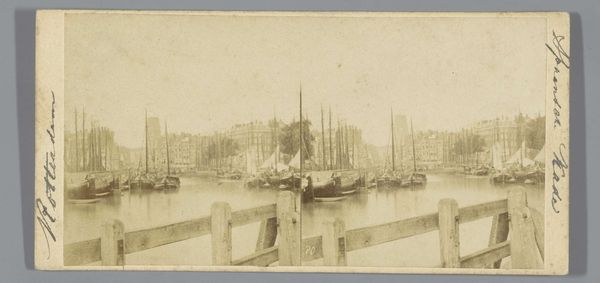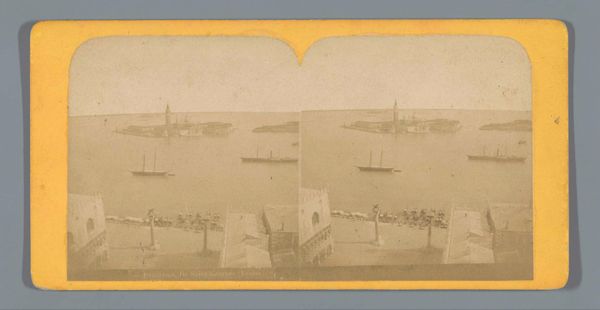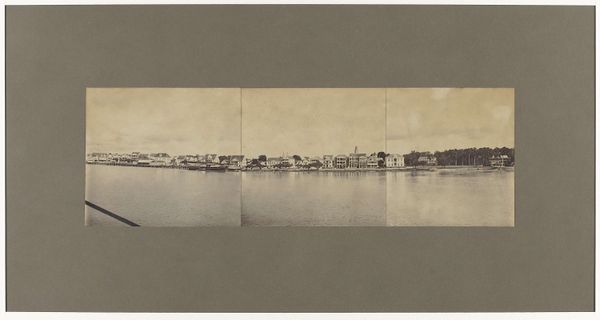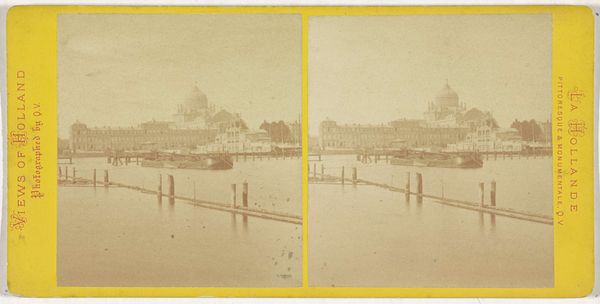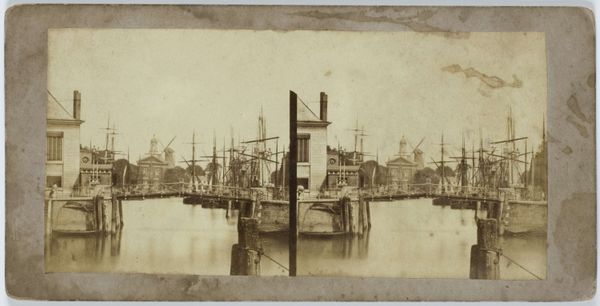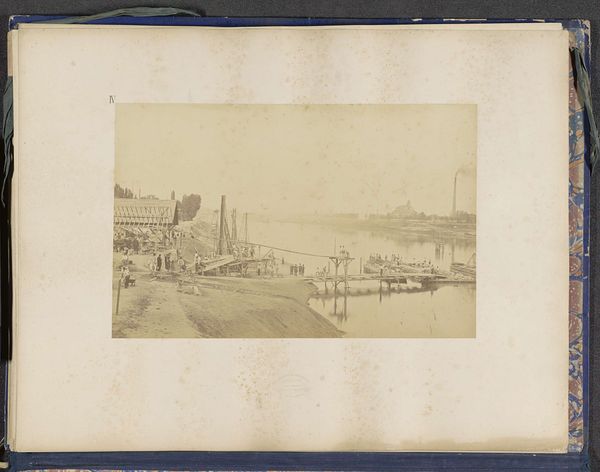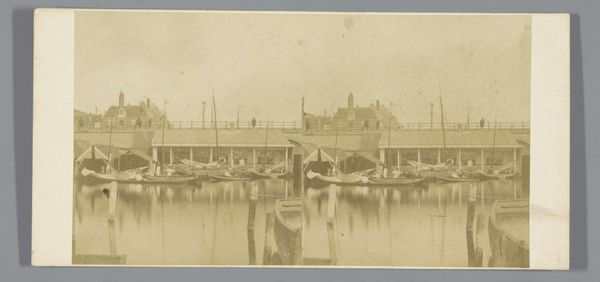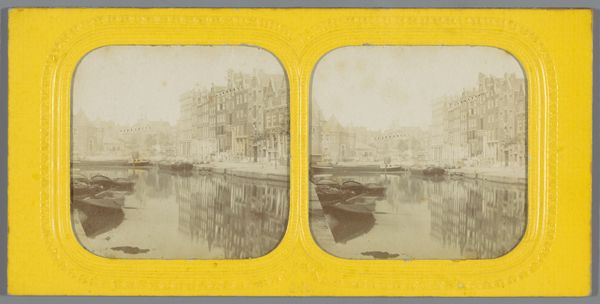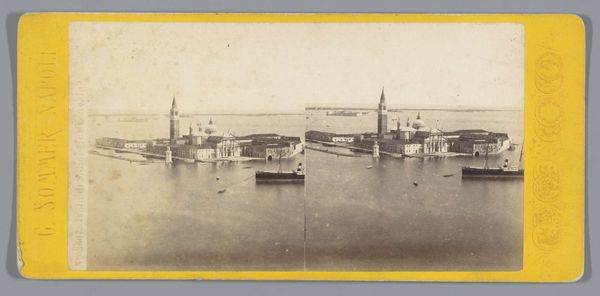
Gezicht op de Amstel, gezien vanaf de Hogesluis, Amsterdam 1855 - 1865
0:00
0:00
pieteroosterhuis
Rijksmuseum
Dimensions: height 82 mm, width 174 mm
Copyright: Rijks Museum: Open Domain
Curator: Before us we have Pieter Oosterhuis's "View of the Amstel, Seen from the Hogesluis, Amsterdam," a photograph dating from 1855 to 1865. Editor: My first impression is of quiet stillness, broken only by the delicate reflections in the water. There's almost a melancholic serenity to this scene. Curator: This sense of stillness speaks to the burgeoning possibilities for urban life alongside a romantic ideal. We need to consider the political economy of Amsterdam at this time, the rise of the middle class and burgeoning merchant power—whose stories and values are subtly coded in the imagery? Editor: Certainly. And this perspective, this precise viewpoint from the Hogesluis bridge, speaks volumes. Bridges, then and now, as connective tissue, infrastructures that determine the flow of goods and bodies… Were new kinds of bodies now circulating differently, now appearing in novel public and social forms in this scene of modern Amsterdam? Curator: Precisely. Also, consider the technical aspects. Photography was still a relatively new medium. Oosterhuis employed techniques pushing its limits—long exposures blurring any moving figure. Think, too, about how that period valued "painterly" effects in photography. Editor: True. The lack of sharp detail lends itself to a pictorialist style, imbuing the industrial cityscape with a softness that aligns with traditional landscape paintings. Is this pictorialist romanticizing intentionally muting the presence of exploited dock workers on the shore? Curator: The muted tones absolutely contribute to this softening, yes. How fascinating to consider these juxtapositions. This is a carefully mediated reality—a constructed view that whispers more than it shouts, inviting us to unravel the threads of societal transformation at play. Editor: Well, thank you for pulling back a few curtains; it really adds layers to the initially calming tableau! Curator: My pleasure. This really makes me eager to look more deeply into the complex socio-economic issues coded into Oosterhuis' choices here.
Comments
No comments
Be the first to comment and join the conversation on the ultimate creative platform.
